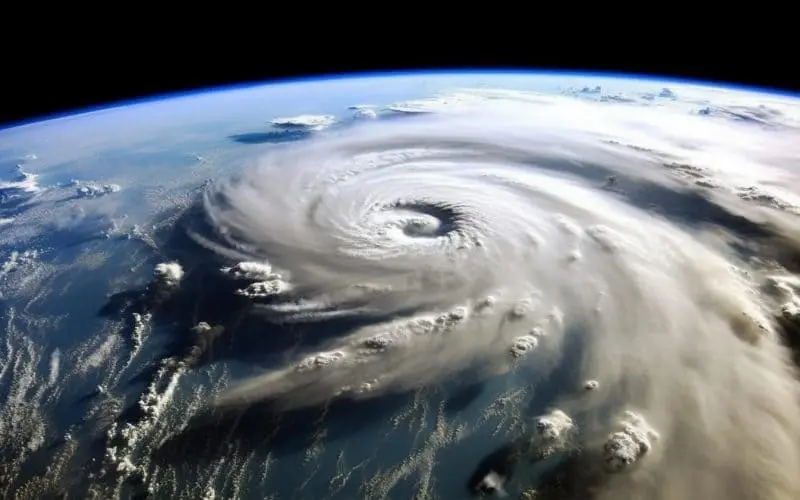Known by different names in different regions of the world, these natural disasters in the form of spiraling winds cause catastrophic outcomes. Hurricanes, typhoons, taifu, tornadoes, and baguio are all different names for cyclones. The word cyclone is derived from the word cyclos, which means coils of a serpent in Greek. Coiling over huge ocean waves, these winds are indeed as malicious as the serpent. In India, climate change has caused drastic temperature differences. In fact, in Maharashtra alone, climate change has raised cyclonic activity 1.5 times more than average. The simplest ways to resist cyclones is through maintaining the health of ecosystems, tree plantation and watching out for the early signs of a cyclone. In this blog, you will read how are cyclones formed and the adverse effects of cyclone.
What is a Cyclone?
Forming over warm ocean waters, cyclones are powerful storms, giant winds that spiral inwards. These dangerous whirlwinds rise when warm air over the ocean elevates, creating a strong low-pressure area, and when more warm air rushes from the surroundings to fill this area. This results in the winds arising and spiraling due to the earth’s rotation. The effects of cyclone disasters are often devastating and destructive, causing damage to people and surroundings. Its aftermath is the most disastrous near the coastal areas.
How are Cyclones Formed
In simple words to the question of how are cyclones formed, cyclones are formed as a result of the generation of low atmospheric pressure in the ocean waters. Low pressures are further classified based on the wind speed that causes the disturbing effects of cyclone. The disturbances can cause a mild depression or a super cyclonic storm and everything in between. The effects of cyclone damage are then classified based on the severity as being minimal, moderate, extensive, and catastrophic.
How are cyclones formed and their types are what we’ll be looking into next.
Tropical Cyclones
Cyclones formed in the tropical ocean regions near the equator, that is the Tropic of Capricorn and the Tropic of Cancer, are called tropical cyclones. This type of cyclone is formed when the temperature of the ocean water is at least 26.5 degrees Celsius. This gives the heat and moisture to fuel the tempest. Characterized by extreme high winds, intense heavy rainfall, and storm surges, the effects of cyclone in the tropics can be destructive. Tropical cyclones have different seasons in different oceanic regions. In the Atlantic, the season is from June to November, and in the Northwest Pacific, there isn’t a specific season. This region sees storms all year round.
Polar Cyclones
A polar cyclone occurs in the polar regions. It is also known as an Arctic or Antarctic cyclone.
This polar vortex forms when cold winds rush into a low-pressure area in the earth’s polar regions. Characterized by strong cold winds, cool temperatures, and snowfall, they are not intense or common. So, the effects of cyclone as such on the polars does not cause much harm. However, the occurrence of a cyclone in these regions significantly influences the atmospheric dynamics.
Meso Cyclone
A meso cyclone is a type of cyclone that occurs within a huge and severe thunderstorm. This portion of damaging winds that’s within spinning in different directions and heights, leads to the formation of a tornado. Tornadoes are only formed when different atmospheric conditions align. When it is formed, it can last up to minutes or extend to hours. These tornadoes cause severe damage to the land regions and its surroundings.
This is how are cyclones formed in different regions. Its effects vary according to the region and the characteristics of each type.
Effects of Cyclone
The 5 effects of cyclone disaster are as follows:
- Cyclones bring in strong powerful winds that cause significant damage to the environment destroying trees, crops, and big forests. Storm surges raise the sea level leading to floods causing damage to marine, and animal life, and destroying the coastal areas completely.
- The effects of cyclone can be extremely damaging. Cyclones cause heavy flooding, landslides, and overflow of rivers affecting the lives of people and their surroundings.
- Meso cyclones that sometimes lead to tornadoes can destroy specific areas making it harder for resettlement.
- The effects of cyclone include displacement of the population as when their houses are uprooted and floodwaters rush in, many have no resources in place. Moreover, cyclones cause water contamination that causes widespread diseases and adverse health problems.
- Cyclones destroy infrastructure like roads, bridges, power lines, water supply, telecommunications, etc., derailing the region’s ability to grow or even recover.
These 5 effects of cyclone are not the only ones to consider. Cyclones cause significant damage to nature and people; thus, its warning signs should be considered, measures should be taken to prepare against disasters, and awareness programs that educate people to be prepared should be organized.


